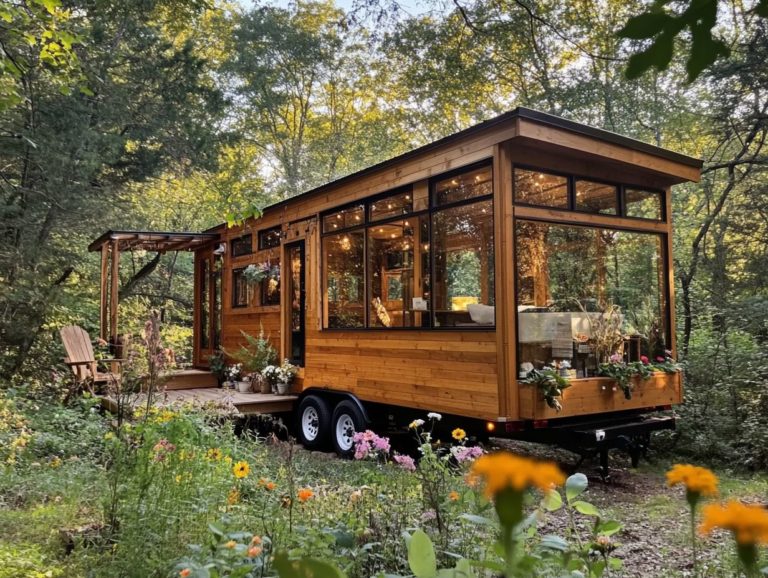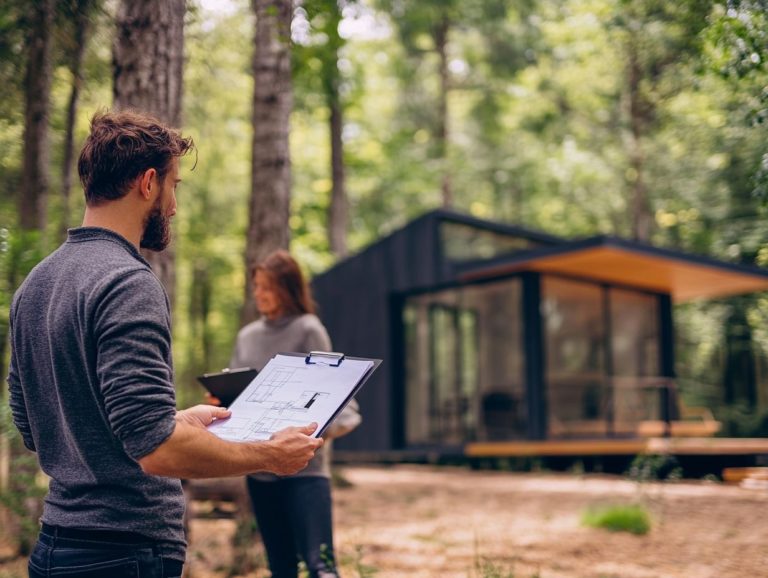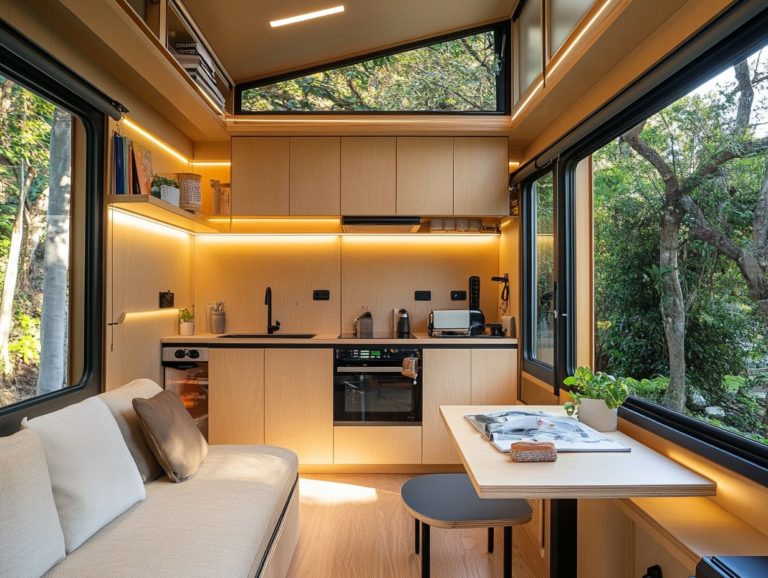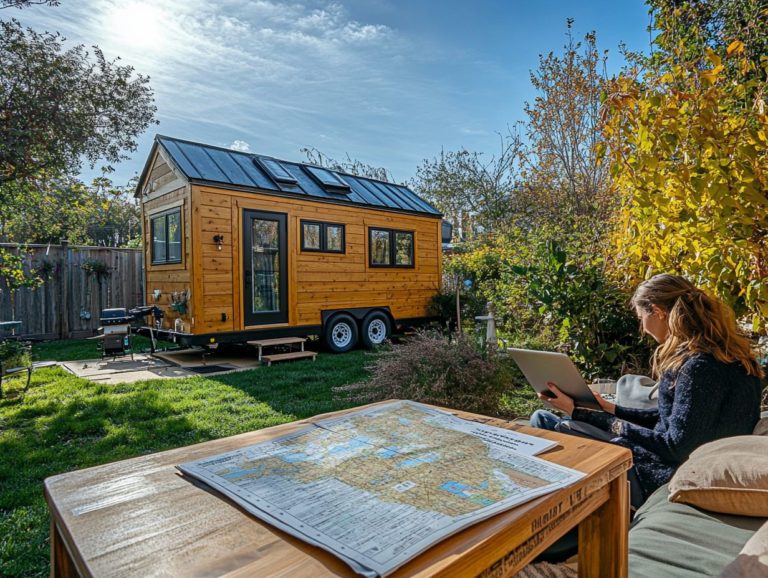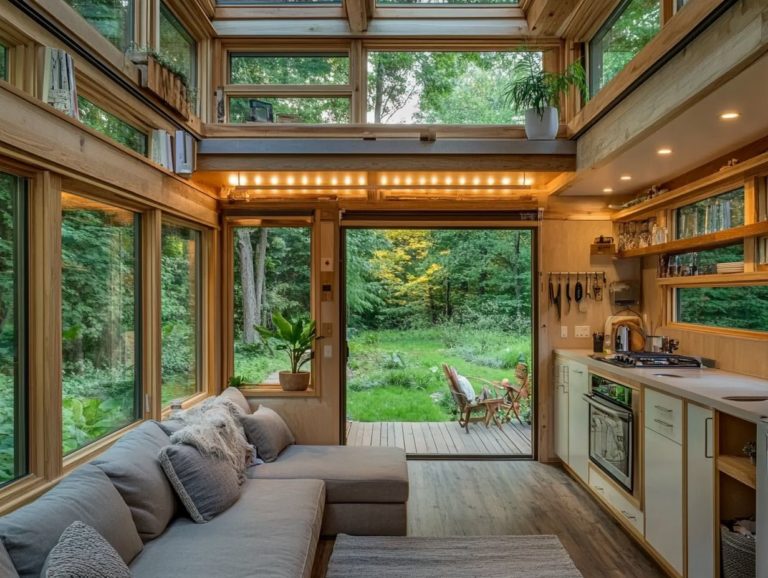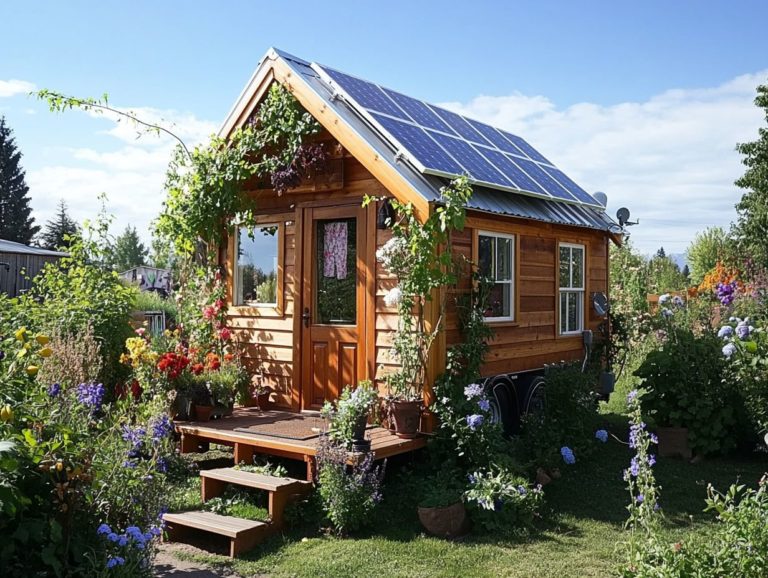What Are Tiny House Community Benefits?
Tiny house communities are transforming your perception of a home, providing a distinctive blend of financial, environmental, and social advantages.
This post explores the many benefits of living in a tiny house community, from significant cost savings to cultivating meaningful relationships with neighbors.
Before you join, check legal and zoning rules this helps ensure you find the right fit.
We ll cover tips on how to find and join the ideal tiny house community that suits your lifestyle. Could this be your next big adventure? Let s find out!
Contents [hide]
- Key Takeaways:
- Defining Tiny House Communities
- Benefits of Living in a Tiny House Community
- Considerations Before Joining a Tiny House Community
- How to Find and Join a Tiny House Community
- Frequently Asked Questions
- What are Tiny House Community Benefits?
- What are the financial benefits of living in a Tiny House Community?
- How do Tiny House Communities promote a sense of community?
- What environmental benefits can be found in Tiny House Communities?
- Are there any challenges to living in a Tiny House Community?
- What social benefits can be gained from living in a Tiny House Community?
Key Takeaways:
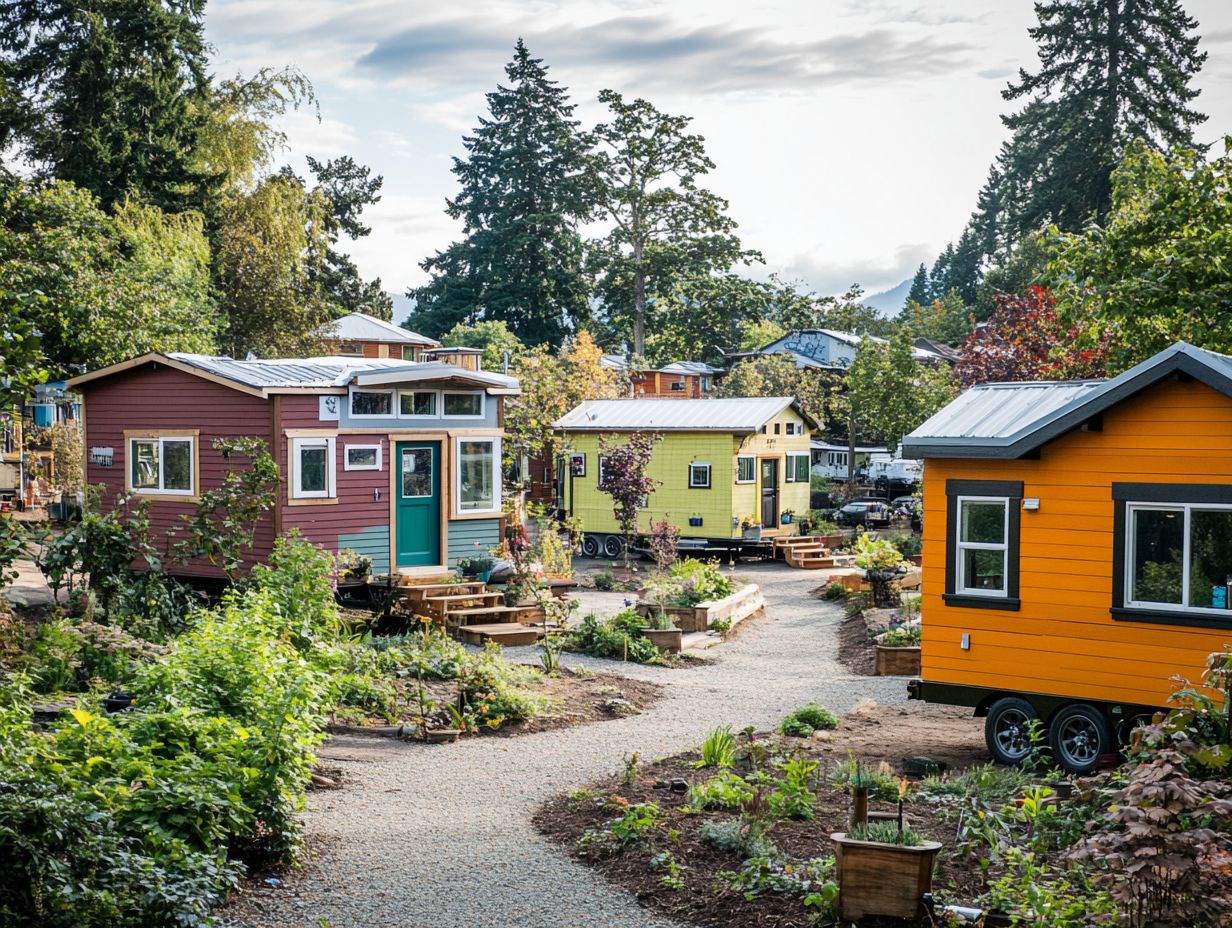
- Living in a tiny house community can bring both financial and environmental benefits, such as lower living expenses and being kind to the planet.
- Tiny house communities also offer social and community benefits, such as a sense of belonging, shared resources, and support from like-minded individuals.
- Before joining a tiny house community, it is important to consider legal and zoning issues, as well as community rules and expectations to ensure a good fit.
Defining Tiny House Communities
Tiny house communities signal a remarkable transformation in how you view living spaces. They blend the ideals of tiny homes with sustainable living into a harmonious lifestyle choice. These communities redefine housing by prioritizing affordable living and kindness to the planet.
The tiny house movement is gaining traction in various regions, including Oregon, Texas, and Florida. This movement attracts individuals like you who seek a minimalist lifestyle. It embraces customization and personalization, while significantly reducing your carbon footprint, making it a compelling option for thoughtful living.
Benefits of Living in a Tiny House Community
Living in a tiny house community presents an array of benefits that extend from financial gains to enhancements in mental well-being.
Lower living costs mean more money for experiences or savings, all while embracing sustainable practices that minimize your environmental footprint.
These communities cultivate strong connections among residents, where shared resources and collaborative efforts foster a profound sense of belonging and support, ultimately elevating your quality of life.
The financial and environmental benefits of tiny homes are truly remarkable, offering you the chance to embrace sustainable living while significantly reducing your carbon footprint. By opting for a tiny home, you can greatly cut down on monthly expenses related to housing, utilities, and maintenance. To learn more about the advantages and drawbacks, check out the pros and cons of tiny house living, paving the way for a more flexible financial future.
The eco-friendly practices that come with tiny house living align perfectly with the principles of minimalism and conscious living. This shift towards compact living not only slashes your mortgage or rent payments but also leads to lower utility bills, which can be transformative for many. For instance, tiny homes frequently incorporate energy-efficient appliances and solar panels, which further diminish costs and minimize waste production. Additionally, understanding the impact of tiny houses on housing can provide valuable insights into this growing trend.
Tiny house communities, like those in Portland, Oregon, or various locales in New Mexico, showcase how shared resources can amplify these financial advantages. Residents often participate in communal practices, such as shared gardens, promoting food security and fostering environmentally beneficial approaches like permaculture, an approach to farming that works with nature. To explore more about the benefits of this lifestyle, check out what are the benefits of going tiny?
Ultimately, embracing tiny home living allows you to strike a harmonious balance between financial stability and ecological responsibility.
Social and Community Benefits
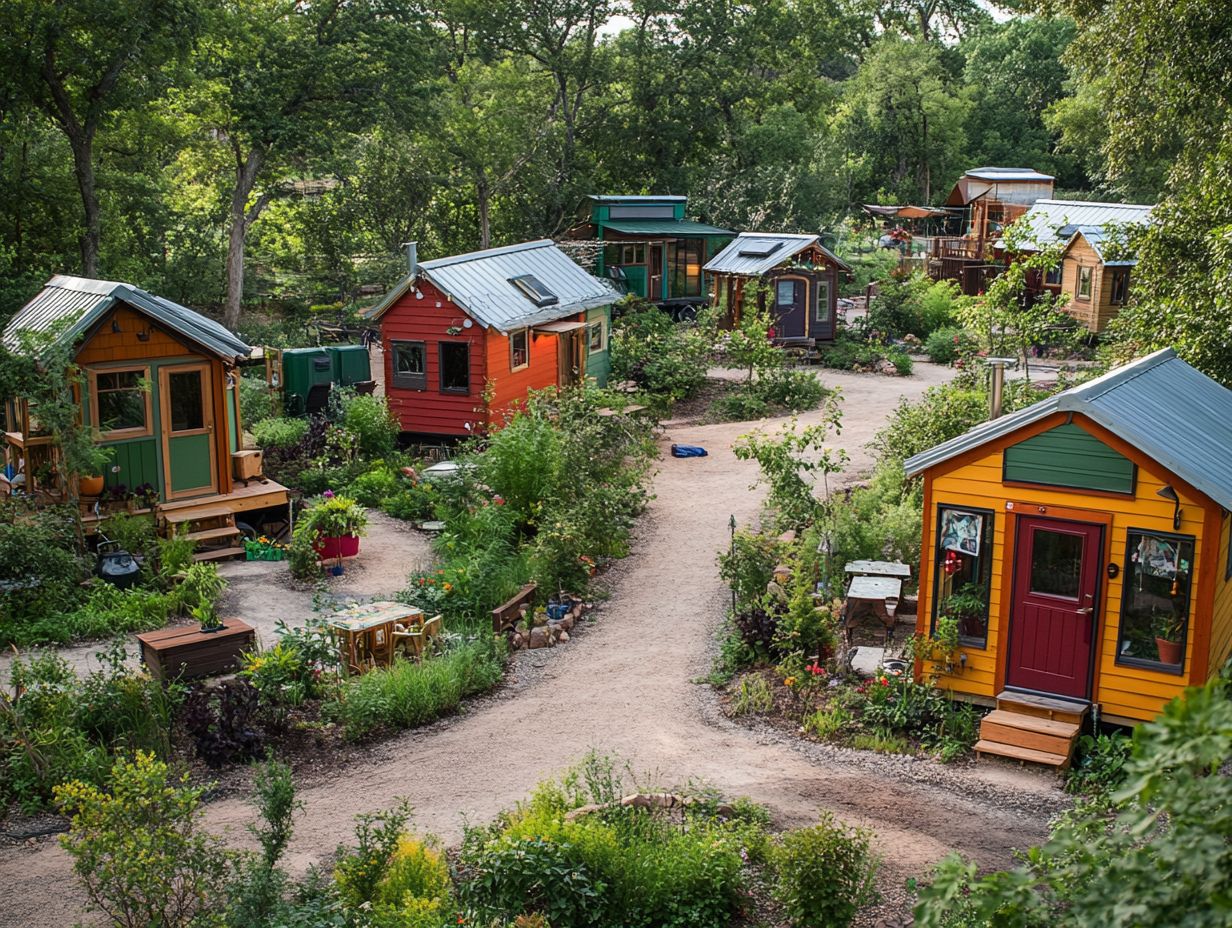
Tiny house communities offer remarkable social and community benefits, enriching your quality of life through meaningful connections. Living in close quarters often fosters a sense of belonging and shared purpose. You ll find that collaboration, resource-sharing, and mutual support become second nature.
This tight-knit environment can significantly enhance your mental health, as you engage in fulfilling interactions and participate in community initiatives that promote well-being while minimizing clutter in your home and life.
In these intimate settings, the spirit of cooperation flourishes. You might find yourself enjoying shared meals, attending local events, and exchanging skills, all of which cultivate lasting friendships. Residents often swap tools, knowledge, and experiences, creating a supportive atmosphere that eases the financial burdens of ownership. For those interested in this lifestyle, exploring the best tiny house communities can be an exciting venture.
Choosing a minimalist lifestyle encourages mindfulness, allowing you to concentrate on what truly matters relationships, experiences, and personal growth. Consequently, the simplicity of tiny living serves as a catalyst for deeper connections and emotional resilience, empowering you to thrive within a vibrant, interconnected community.
Considerations Before Joining a Tiny House Community
Before you commit to a tiny house community, it’s essential to weigh several important factors, including legal and zoning issues and community rules and expectations. Zoning issues refer to local laws that decide how land can be used. Familiarizing yourself with the legal landscape surrounding tiny homes can help you sidestep potential conflicts and ensure you comply with local regulations, which can differ notably from state to state, like in California, Texas, and Florida.
Understanding the community’s rules is also vital for creating a peaceful living environment.
Legal and Zoning Issues
Legal and zoning issues are important things to think about when you delve into the world of tiny homes and their placement within communities. Regulations can vary dramatically from state to state think California, Florida, and Texas. It s essential for you to grasp the local laws governing land use, building codes, and the very definitions of tiny homes. Knowing this protects you from legal troubles and ensures that you remain compliant, paving the way for a smoother transition into sustainable living.
When you examine specific examples, the discrepancies in tiny home regulations become strikingly clear. In California, for instance, some counties have embraced tiny houses as affordable housing solutions, while others impose stringent zoning restrictions that can be quite limiting. On the flip side, Florida has made significant progress with its more lenient legislation, allowing tiny homes to thrive in designated areas and offering exciting opportunities. Additionally, understanding the environmental benefits of tiny houses can further highlight their potential in sustainable living.
It’s crucial for anyone interested in tiny living to engage proactively with local leaders and advocacy groups. This collaboration not only enhances your understanding of the legal landscape but also empowers you to participate in grassroots efforts aimed at fostering more inclusive zoning reforms that can support this burgeoning housing movement.
Consider diving deeper into tiny living and finding the community that s right for you!
Community Rules and Expectations
Community rules and expectations are crucial for maintaining harmony within tiny house communities. They set the stage for a lifestyle steeped in intention among residents. These guidelines encompass aspects like noise levels, maintenance responsibilities, and the use of shared resources. By understanding and adhering to these expectations, you can foster strong relationships and elevate your overall quality of life.
Establishing clear guidelines encourages cooperation and respect among members. Designated quiet hours promote a serene ambiance, while agreements on landscaping and community gardening cultivate a sense of ownership and pride.
These expectations highlight the importance of communication. You can voice concerns or suggestions in an open forum. Such practices safeguard individual rights and nurture an atmosphere where collaboration flourishes.
Ultimately, these shared principles are essential for nurturing an intentional lifestyle that prioritizes sustainability and the well-being of every member.
How to Find and Join a Tiny House Community
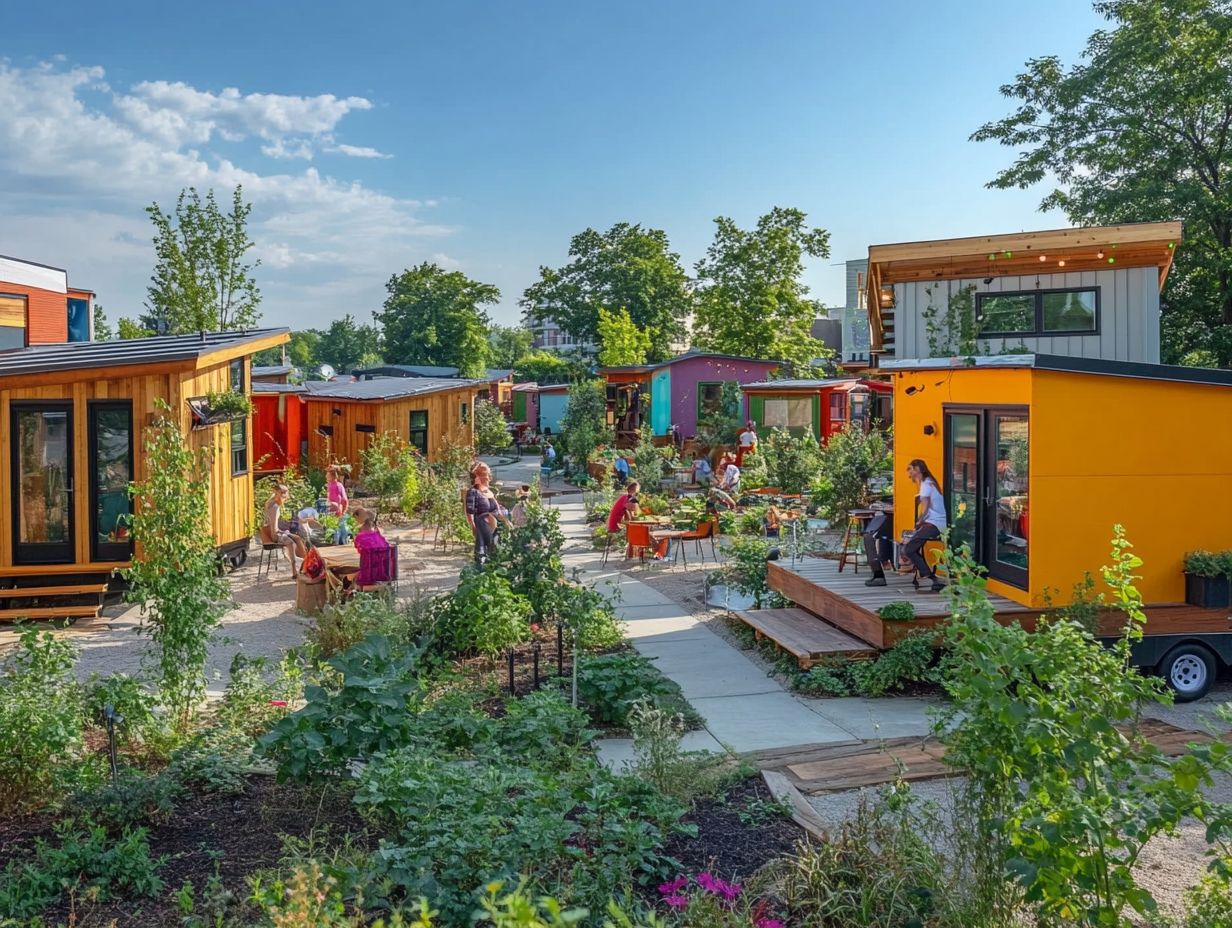
Finding and joining a tiny house community requires you to use various resources and networking opportunities. Connect with individuals who are equally passionate about sustainable living and community initiatives.
Whether through online platforms or local meetups, you can uncover a treasure trove of information and support as you embark on your journey toward a minimalist lifestyle. Engaging with these resources enriches your journey and connects you with others!
Resources and Networking Opportunities
Resources and networking opportunities are vital for anyone eager to dive into the tiny house movement and connect with potential communities. Websites, social media platforms, and local groups serve as treasure troves of information about available tiny homes, community initiatives, and events focused on sustainable living. Engaging with these resources cultivates a sense of belonging and shared purpose among those committed to an intentional lifestyle.
These platforms often have forums where you can exchange tips and share experiences. Local meetups and workshops present excellent opportunities for connections, allowing for the exchange of ideas on design, zoning laws, and sustainability practices. Zoning laws refer to regulations that govern how land and property can be used.
The advantages of such networking go beyond just gathering information; it can spark collaborative projects and lead to arrangements for shared spaces. Participating in these community initiatives provides invaluable insights and support, making your transition into tiny house living smoother and more enriching.
Frequently Asked Questions
What are Tiny House Community Benefits?
Tiny House Community Benefits refer to the advantages and positive impacts of living in a community of tiny homes. These benefits include financial, social, and environmental aspects.
What are the financial benefits of living in a Tiny House Community?
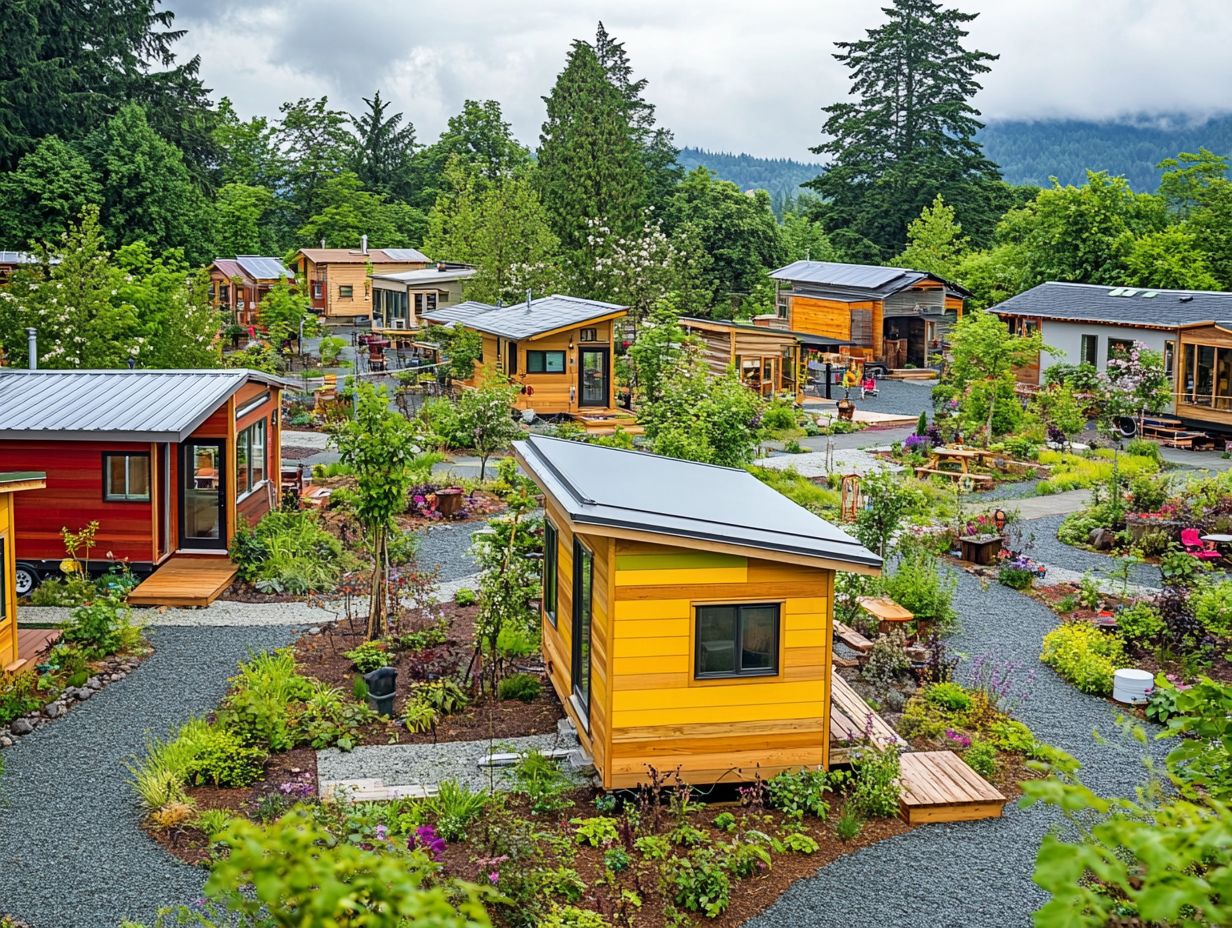
One of the main financial benefits is the lower cost of living. Tiny homes are typically much cheaper than traditional houses, and living in a community can also reduce expenses for utilities, maintenance, and other shared resources.
How do Tiny House Communities promote a sense of community?
Tiny House Communities offer a closer-knit feel compared to traditional neighborhoods. The smaller, more intimate setting allows for more interaction and connection among neighbors.
What environmental benefits can be found in Tiny House Communities?
Living in a tiny house means using less energy and resources, resulting in a smaller carbon footprint, which is the total amount of greenhouse gases produced by human activities. Many Tiny House Communities prioritize eco-friendly practices like composting, rainwater harvesting, and using renewable energy sources.
Have more questions? Join our community forum today!
Are there any challenges to living in a Tiny House Community?
Living in a Tiny House Community can come with challenges. These may include finding the right land, understanding local rules about land use and construction, and sharing resources.
Many of these challenges can be tackled through strong communication and teamwork among residents. Together, you can create solutions that benefit everyone.
What social benefits can be gained from living in a Tiny House Community?
Tiny House Communities provide a unique sense of belonging. The close living arrangements encourage friendships and a supportive environment.
Shared spaces allow for easy social interactions, making it simple to connect with your neighbors. This can lead to lasting relationships and a tight-knit community.

